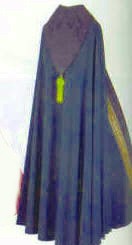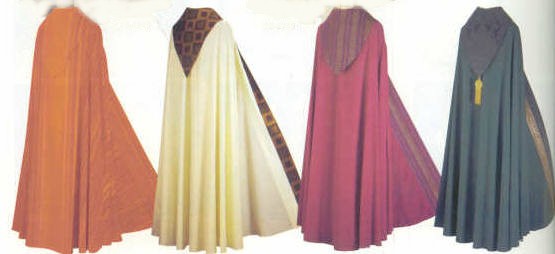



LiturgicalVestments...The Cope
VicarDoug
By Paul Turner
A cope is a liturgical vestment resembling a cape.
It is worn by a priest to lend solemnity to a procession or a service that does not include Mass.
He wears itinstead of the chasuble, over an alb and stole or over a cassock, surplice and stole.
The cope originated long ago as a hooded garment to protect the vestments from
inclement weather. Its Latin name, pluviale, means "raincoat."
The minister who first wore one probably removed it after entering the church building. During the Middle Ages, however, the cope acquired additional purposes and came to be worn as a vestment on its own.
Today's cope reaches from neck to ankles and fastens in front with a simple clasp at the top. Some copes still have a hood, but most have a round or angular cloth flap on the back as its vestige.
Many copes are highly decorated. They come in all the liturgical colors and observe the rules governing the appropriate color for the chasuble and stole.
The priest may wear the cope when presiding at diverse occasions, including exposition and benediction of the Blessed Sacrament, the procession for Palm Sunday, marriages or funerals outside of Mass and Morning or Evening Prayer. A bishop who confirms apart from Mass may also wear the cope to lead the ceremony.
On Palm Sunday, if the priest wears a red cope for the blessing of branches and the solemn procession, he exchanges it for a red chasuble when he first reaches the presider's chair in the sanctuary.


